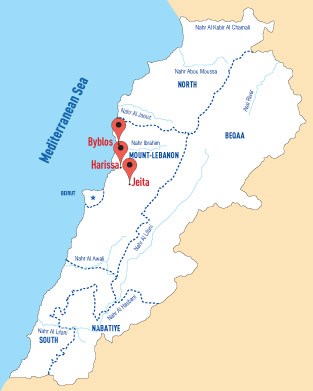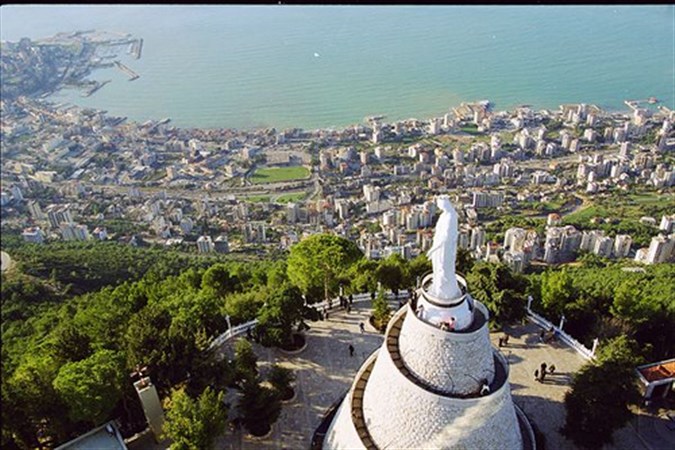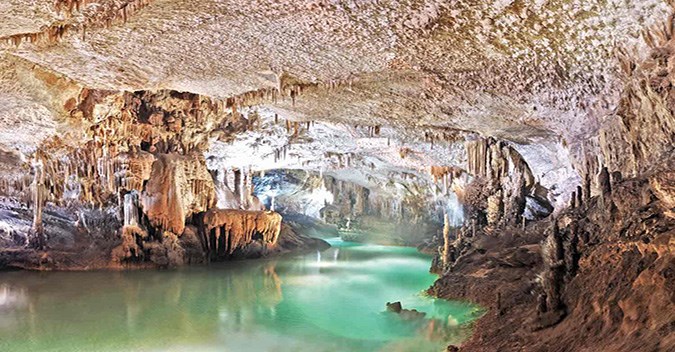-
-
Main Office - BEY
Du Parc building, Sami El Solh Avenue - Beirut
Dubai+971 58 898 8244
-
LATEST NEWS CLICK HERE


Jeita, Harissa & Byblos (with Lunch)
From 01 January till 31 March 2024Highlights- Visit Jeita, one of the world's most beautiful cavern, that was nominated for the seven world wonders.
- Byblos is one of the oldest towns in the world that goes back at least 7,000 years. The rise and fall of nearly two dozen successive levels of human culture on this site makes it one of the richest archeological areas in the country.
- Admire views of Jounieh Bay from the magnificent Our Lady of Lebanon statue at Harissa.
- Mon
- Tue
- Wed
- Thu
- Fri
- Sat
- Sun
- STARTING PRICE $88
- Info Our visit starts with the beautiful Phoenician city of Byblos , then continues with the famous Jeita grottos with their fabulous sceneries. Lunch and ends in Harissa (one way cable-car) with a panoramic view of Jounieh bay.
-
Languages


-
Includes
Transportation in a deluxe vehicle, pickup-drop off from/to Beirut, professional guide, lunch at first class Lebanese restaurant touristic menu with one soft drink or one small glass of Arak, entrance fees and VAT.
 Send Your Request
Book Online
Send Your Request
Book Online
-
Jeita, Harissa & Byblos
-
JeitaNominated for the seven world wonders. Jeita is one of the world's most beautiful cavern , at 20 km away north of Beirut .The lower caverns are visited by boat over a subterranean lake 623 meters long. A dry upper gallery can be seen on foot.After many years of exploration, Lebanese speleologists have penetrated 6,910 meters from the entry point of the grotto to the far end of the underground River and 2,130 meters of the upper galleries.The main source of the Dog River (Nahr El Kalb) rises in this cavern.Harissa600 meters above sea level and 26 km away from Beirut, with a wonderful panoramic view covering the Bay of Jounieh. Statue of the Virgin Mary was erected in 1908. Inside its base, a chapel with outside spiral staircase that leads to the top, as well telepheric service is provided from the bay of jounieh to the mountain of Harissa.ByblosOne of the oldest towns in the world goes back at least 7,000 years. The rise and fall of nearly two dozen successive levels of human culture on this site makes it one of the richest archeological areas in the country.Under the domination of the Egyptian pharaohs in the 3rd and 2nd millennia B.C, Byblos was a commercial and religious capital of the Phoenician coast.It was in Byblos where the first linear alphabet, ancestor of all modern alphabet, (through Greek and Latin), was invented. The sarcophagus of Byblos’ king Ahiram, now in the national museum, bears the oldest known Phoenician inscription. Byblos was also the centre of the Adonis cult, the god of vegetation who dies in winter and renewed each spring.Like its sister cities, Byblos was destroyed in the earthquake of 551 A.D. It regained some consequence in crusader times when it came under the county of Tripoli. A modest town under the Mamluks and ottomans, Byblos grew rapidly during the recent war in Lebanon when commercial activities moved from Beirut to regional capitals.This busy modern town located at 36 kilometers north of Beirut, has the “Roman Medieval port” as its main tourist hub. The landmarks in this area are: the crusader castle and church as well as the extensive remains of city’s past - from Neolithic times to the crusader era. A beautiful Mosque adds to the cultural mix in the old part of Byblos. And all around a diversity of cafes and restaurants can be found.
-
General Conditions
-
- Rates include transportation in deluxe Motorcoaches or vans, services of professional English and French speaking guides, lunch, entrance fees and VAT.
- Lunches when included in tours are served in Lebanese restaurants with a set Menu of Lebanese Mezze, main dish, fruits or dessert with one soft drink or on small glass of arak.
- Children up to 3 years are free of charge but have no seat.
- Children between 3 and 12 years get $15 discount. No discount for half day tours and tours without lunch.
- Payment in cash or by credit card.
- All prices and programs are subject to change without prior notice.
FREE PICK-UPS:
Departures of all tours are at 08:30 from our office. Pick ups are provided free of charge from all hotels in Beirut for bookings received up to 20:00 of the day preceding the tour.
Guests are requested to be at the reception desk of their hotel starting 07:45. Drivers may pass any time between 07:45 and 08:00. They are instructed not to wait.
Guests missing their pick-up will have to come to our office at their own expense.
Important Notes:
- The company is not responsible for forgotten items on the daily tours. Lost and found items will be kept at Nakhal offices for collection for a maximum of 30 days.
CloseSend A RequestBook Your Tour


